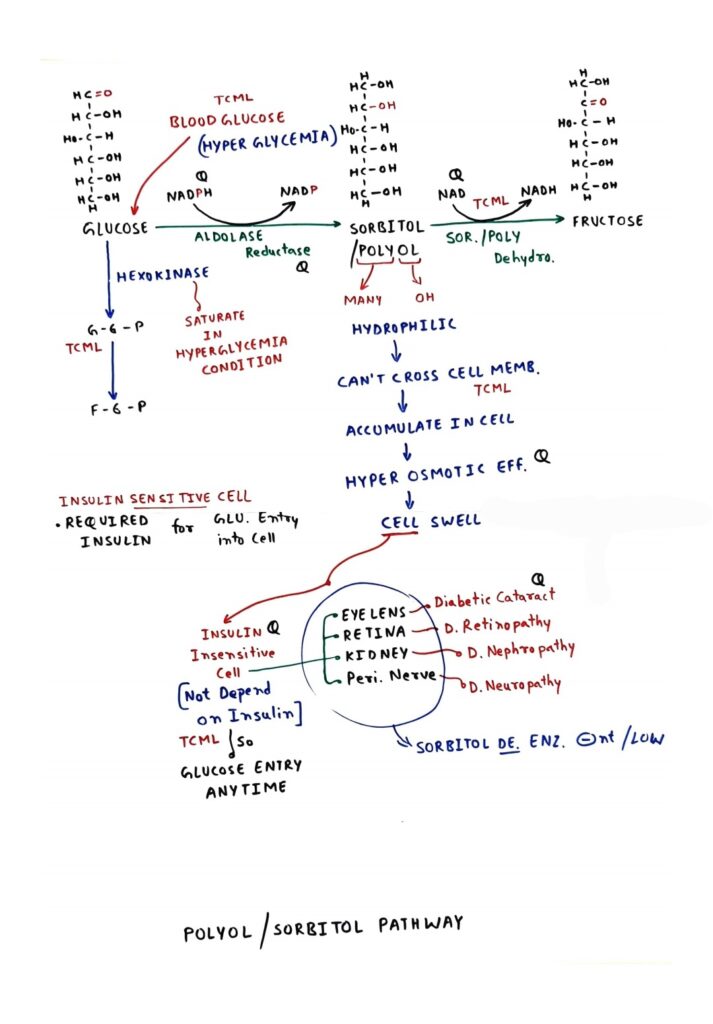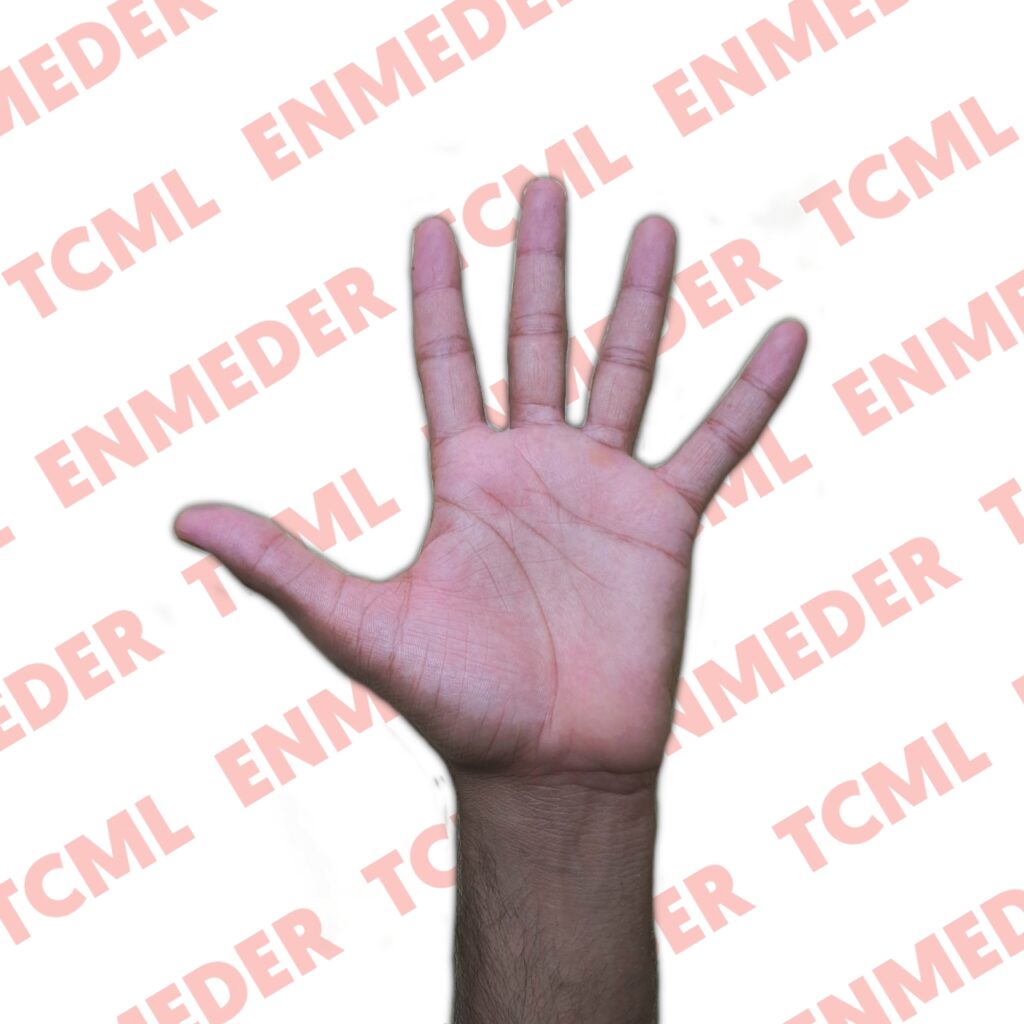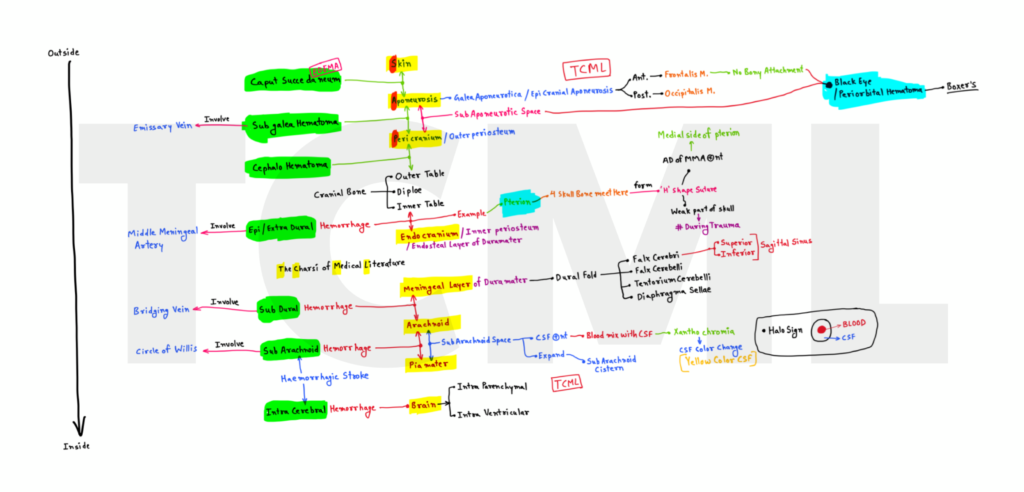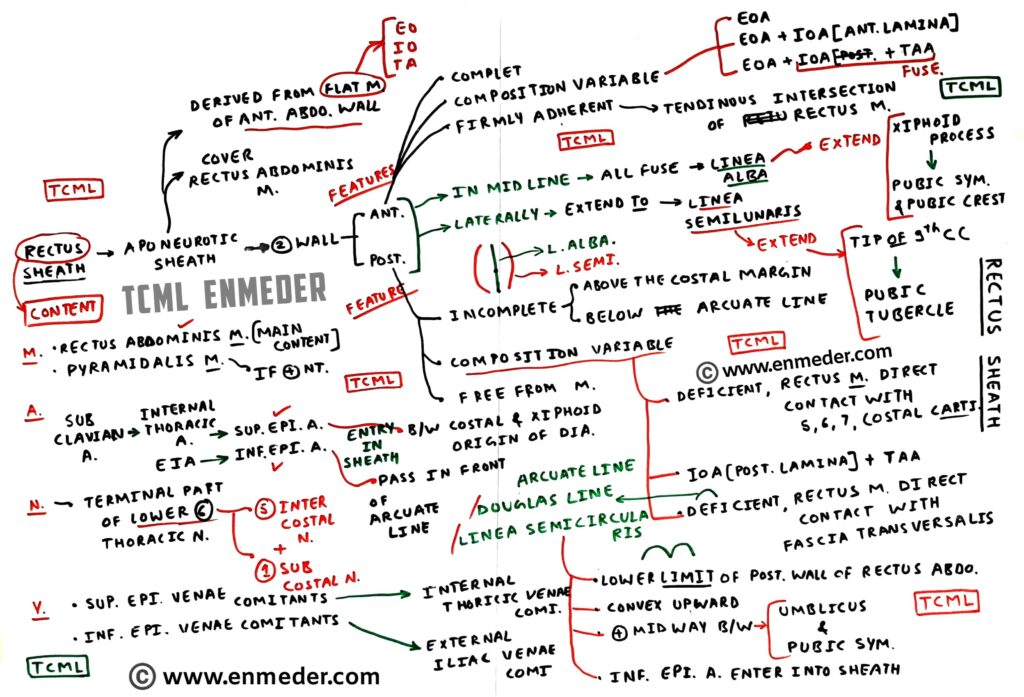mbbs
Sorbitol pathway and diabetic cataract
Chart Overview- 1. Hyperglycemia 2. Hexokinase 3. Aldolase reductase 4. Sorbitol 5. Insulin Insensitive Cells 6. Complication of Diabetes 7. Diabetic cataract
Sorbitol pathway and diabetic cataract Read More »
Upper limb muscles
Overview- 1. Muscles present in pectoral region 2. Muscles present between ribs and scapula bone 3. Muscle present between vertebral column and humerus bone 4. Muscle present between scapula and humerus bone 5. Muscle present between scapula, clavicle and humerus 6. Arm muscles- Anterior and posterior compartment 7. Forearm – Flexor and extensor compartment 8.
Upper limb muscles Read More »
GallBladder stone
Complications of gallstone/cholelithiasis- 1. Obstruction of extra hepatic biliary apparatus and gastrointestinal tract 2. Compression of common hepatic duct and common bile duct 3. Fistula between gallbladder and it’s surrounding structures 1. Obstruction – A. Extra hepatic biliary apparatus (EHBA) – 1. Cystic duct (CD)Due to obstruction of cystic duct by gallstone it causes acute
Intracranial hemorrhage
Overview – 1. SCALP layer’s 2. Meninges 3. Extra cranial or SCALP haemorrhage 4. Intra cranial hemorrhage 5. Cause Download here Layers from outside to inside – 1. Skin 2. Connective tissue 3. Aponeurosis or epicranial aponeurosis or galea aponeurotica 4. Loose connective tissue / Sub aponeurotic space 5. Pericardium / Outer periosteum 6. Outer
Intracranial hemorrhage Read More »
Femoral nerve
Overview 1. Femoral nerve and it’s branches 2. Cutaneous nerve of thigh 3. Patellar plexus 4. Muscles of anterior compartment of thigh 5. Hip joint nerve supply 6. Knee joint nerve supply 7. Clinicals In lower limb anatomy we study five main nerves 1. Femoral nerve 2. Obturator nerve 3. Sciatic nerve 4. Tibial nerve
Anatomy questions
Overview- 1. Blood Supply 2. Anastomosis 3. Venous drainage 4. Covering 5. Nerve and plexus 6. Retinaculum 7. Boundaries and content 8. Joints 9. Viscera 10. NeuroAnatomy 11. Embryology 12. Histology 1. Blood Supply 1. Aorta parts and it’s branches 2. Heart blood supply (Aortic sinus) – Right and left coronary artery Question. Myocardial infraction
GI bleeding
Overview- 1. Epistaxis 2. Hemoptysis 3. Hematemesis 4. Hematochezia 5. Melena6. Hematouria Blood from Nose (Epistaxis) It is also called Epistaxis. Some important questions about nose bleeding. Question 1. Epistaxis is due to the rupture of Kiesselbach’s plexus which is present at little’s area of anterior inferior part of the nasal septum. Question 2. Four
Rectus sheath
Overview – 1. Theory 2. Diagram 3. Clinical This is a aponeurotic sheath covering the rectus abdominis muscle (Anterior abdominal wall muscle). We covered rectus sheath anatomy into three point are as follow: Theory, diagram and clinical’s. A. Theory – The rectus sheath has two wall, and it contain two muscles, two artery, two vein,
Six Charts
Hello future Dr. I am Pawan nagar from TCML Team. A lot of medical students messaged me (On the YouTube comment section, WhatsApp, Instagram and Messenger etc.) and said that sir we do not understand anything in anatomy and we’re scared of anatomy. Based on your messages we have created a sequence of six charts









